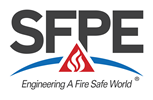FEMTC 2011
Coupled Heat Transfer Processes during Fires – A New Model and its Application to Nuclear Facilities 
Volker Hohm - Trebes GmbH & Co. KG
Abstract
Emergencies in passenger trains can constitute a significant risk to life safety. Existing Standards describe the top-general requirements which need to be considered to ensure safety for passengers but, are they realistic? Standards do not take into account the passenger characteristics and behaviours, the train crew activities and effects of different procedures in a variety of changing scenarios. This paper presents data from two different evacuation drills in high speed trains conducted by Spanish Railroad Administration (RENFE Operadora). Key evacuation parameters are indentified and measured regarding the Response Phase (Evacuation Drill 1) and the Evacuation Movement Phase (Evacuation Drill 2). The data collections are intended to provide a better understanding of critical behavioural components for their use in evacuation analysis by computer modelling and simulation. Results from Evacuation Drill 1 show that, despite the lack of crew assertiveness, passengers responded relatively quickly. In some manner the information deficit was compensated by the interaction between evacuating passengers and the PA system notification. We found that different coaches can produce different response times depending on the spread and the provision of available information. During the Evacuation Drill 1, participants did not carry luggage. However, very high proportion of the passengers (by 86%) was observed collecting their belongings. These non emergency activities can delay passenger safety and should be taken into account in evacuation calculations. The main objective of the analysis of Evacuation Drill 2 was to collect data related to the passengers walking speeds and flow rates. Results suggest that: 1) required values established by standards could be unrealistic, 2) the values applied by default in current egress models, could not be adequate for passenger trains evacuation analysis and 3) there is a need of more specific data to simulate evacuation process in train vehicles.
Presentation
Resources
| Paper | Presentation | ||
|---|---|---|---|
| HTML | HTML | ||
| Resources Archive File (.zip) | |||

